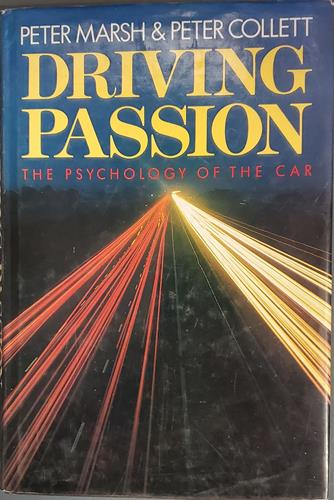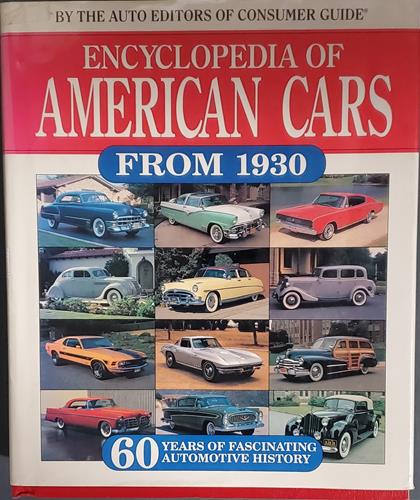
The basis of a PBS documentary to be broadcast in winter 1997, a rich social, political, and technological history of the Interstate Highway System explores its origins, creators, and sometimes dubious effects on American society. 25,000 first printing.
DIVIDED HIGHWAYS by Tom Lewis is a 354-page book that focuses on one particular aspect of American history, namely, the beneficial but sometimes divisive aspects of the federal highway system.
PHOTOGRAPHS. There are 45 quarter page black and white photographs. For example, page 71 shows a photo of a new housing development in the early 1950s, with several moving vans delivering truckloads of furniture to each house. One of the trucks reads, "BEKINS." Another reads, "PAN AMERICAN STORAGE." Another photo, this one on page 175, shows the Pennsylvania Turnpike being built. It opened in 1940. Page 177 has photos of the two congressmen most responsible for the federal INTERSTATE HIGHWAY BILL, Albert Gore and George Fallon. Page 210 shows photos of WILLIAM BORAH and RICHARD BAUMBACH, who organized a successful protest to prevent an elevated highway from being built through the history French Quarter in New Orleans. Page 208 shows a Holiday Inn being opened. This chain was run by Charles K. Wilson.
CHAPTERS. The book contains 12 chapters, each having an indistinct name, such as, "The Chief" (Chapter One); "Mastering Nature" (Ch. 2); "The Dreamway" (Ch. 3); "The G.I. and the General" (Ch. 4); "The Grand Plan" (Ch. 5), and so on.
TITLE. The book's title is explained on the first page of the Preface, where we read, "The highway system connects American cities and people in a vast web of roads that carry the life of the nation, yet to build it, tens of thousands of Americans were dispossessed of their land and saw their homes and neighborhoods destroyed."
The following provides an account and excerpts from some of the many high points of the book.
THOMAS H. MACDONALD. On page 4, we learn that in 1926, a series of roads leading from Atlantic City to San Francisco became known as ROUTE 40. Interstate Route 40 was created by Thomas H. MacDonald, chief of the FEDERAL BUREAU OF PUBLIC ROADS. We learn that as a boy in Iowa, MacDonald witnessed the roads which, for a few months of every year, were too muddy for farmers to bring their grain to one of Iowa's many railroad stations. MacDonald learned civil engineering at Iowa State College. This, and other ag colleges, were initiated in 1862 by Justin S. Morrill of Vermont, who drafted the MURRILL LAND GRANT ACT. MacDonald took a road-building course from Prof. Anson Marston (page 7). He soon became a chief engineer for roads in Iowa. He faced, and overcame, the following problems: (1) Bridges made of wood that were too weak to carry horses and wagons, not to mention cars; (2) Bid rigging; (3) Fraud; (4) Shoddy work. In 1919, MacDonald became chief of the FEDERAL BUREAU OF PUBLIC ROADS. We learn that trucks increased in popularity after World War I, with the consequent destruction of thin concrete or thin asphalt roads. We learn that an early version of the interstate highway system was the "Pershing Map," which was intended to facilitate movement of vehicles of the U.S. military. We learn that in 1890, Benjamin Holt of Stockton, CA invented the caterpillar tractor, which enabled road building on soft soils (page 17). We learn about changing relations between the auto and train. In 1903, it took 63 days to drive from New York to California, and only 4 days by train. Also, we learn that railroads were angry at interstate truckers, because there were no federal regulations for trucking, at least, not until MOTOR CARRIER ACT of 1935.
ROBERT MOSES. Pages 26-29, 36-38, concern Robert Moses, who designed highways for New York City and Long Island. Moses devoted attention to details, such as planting azaleas and dogwoods at the sides of highways, and to granite bridges, each with a different pattern. Moses also made frequent use of eminent domain, which allows state and federal governments to steal private property and to destroy neighborhoods. We learn that Moses oversaw the building of bridges in New York City, e.g., Bronx-Whitestone Bridge (suspension bridge) and Triborough Bridge.
NEW ORLEANS. Page 182-210 concern plans to build an elevated highway in New Orleans, which included highways going through the FRENCH QUARTER, planned by Robert Moses. We read about successful protests by Borah, Baumbach, Edgar B. Stern (owner of WDSU television station in New Orleans), Louis Oberdorfer (attorney in Washington DC), and John A. Volpe (secretary of Transportation in Nixon's cabinet).
PERIPHERAL TOPICS. Although I would prefer a book that stays "on topic," DIVIDED HIGHWAYS is made more enjoyable by occasional forays into the global context. For example, page 54 contains a paragraph on world events in 1939, e.g., Franco captured Madrid and ended the Spanish Civil War; Mussolini invaded Albania; and Hitler captured Czechoslovakia.
WALTER A. JONES. Pages 58-70 concern the building of the Pennsylvania Turnpike, headed by Walter A. Jones. Jones was a businessman in the fields of glass manufacturing and oil refining, and had in 1936 contributed $150,000 to FDR's election. In turn, FDR funded the Turnpike, which provided jobs to some of the 566,437 unemployed people in Pennsylvania. The PENNSYLVANIA TURNPIKE COMMISSION awarded contracts to 118 companies. Portable generators provided lights for night work. Contractors were required to have generous supplies of spare parts to fix their machines. Unlike most earlier highways, the new Turnpike did not follow the contours of the land, but instead leveled the ground and blasted hills out of the way. Temporary cement plants were built where bridges were being constructed. We read, e.g., "one team of about twelve drillers and twelve helpers called chukkers, working form a steel scaffold that workers called a jumbo, drilled as many as a hundred holes deep into the rock face. Toward the end of an eight-hour sift, the men packed the holes with explosives." (As you can see, this book is filled with lively facts, which are skillfully woven together.)
CHARLES SCHUMATE and the EISENHOWER TUNNEL. Pages 253-257 concern the "STRAIGHT CREEK TUNNEL," later named, "EISENHOWER TUNNEL." We read that in 1920, airplanes out of Denver could not fly over the Rockies because of lack of pressurized cabins. We learn that the project was like building a 5-story building through a mountain. We read that the problem of carbon monoxide from expected automobiles and trucks was overcome with six fans at each end of the tunnel. We read that the problem of water leaking into the tunnel, resulting from melting snow in the spring, and causing 300 gallons of water to leak into the tunnel, was solved by building drains. We read that the bedrock was 75% granite and 25% gneiss and schist, and that there were fault zones. The first of the two bores opened in 1973, and the second in 1979. The project was overseen by Charles Schumate, who had no college degree, but who was, "a chainman, the one who assisted surveyors in measuring distances . . . instrument man, project engineer, resident engineer, then chief administrative engineer of the maintenance division."
ALBERT GORE AND GEORGE FALLON. Pages 115-123 inform the reader of highway bills by Tennessee senator Albert Gore and Maryland representative George Fallon. Fallon's bill was modeled after Gore's bill, but refrained from raising the public debt. Fallon's bill raised taxes on gasoline, diesel fuel, trucks, buses, tires, and was called, "pay-as-you-go." Eventually, funding for Fallon's bill was provided by a separate bill, HIGHWAY REVENUE ACT, authored by Hale Boggs. Thus, the FEDERAL-AID HIGHWAY ACT of 1956 was signed by Eisenhower on June 29, 1956, when he was recovering from surgery for ileitis. The Act provided 25 billion dollars for the interstate highways, which included, e.g., the Beltway that circles Washington DC.
Lewis, Tom
Divided Highways: Building the Interstate Highways, Transforming American Life
384
8.00 x 5.25 x 0.66 inches





















